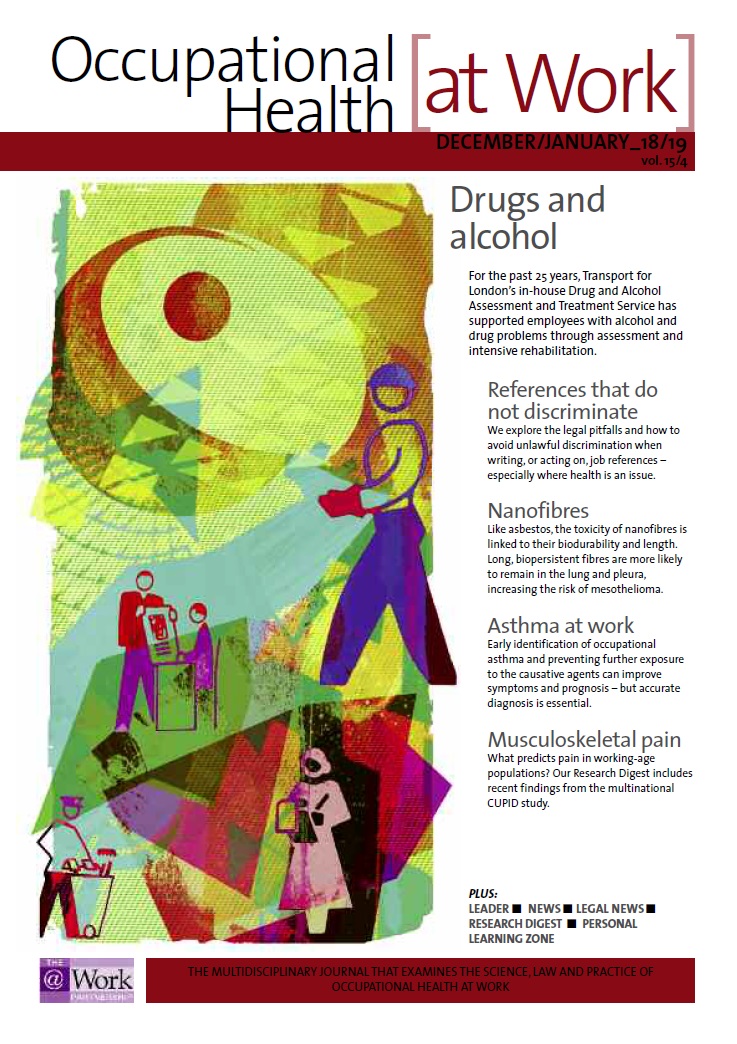December/January 2018/2019 (vol. 15/4)
ContentsFeaturesNewsLegal
NewsResearch DigestResearch PlusCPD
 Asthma at work, part 2
Asthma at work, part 2
Part 2: diagnosis of occupational asthma
Summary:
We would like to thank the HSE for making this article open access. To read this article in full, please click on this link.
In the second in a series of articles on asthma at work Lisa Bradshaw and Chris Barber give practical and evidence-based guidance on diagnosing occupational asthma..
This is the second article in a series on occupational asthma (OA)1. The first article discussed the nature, extent and causes of OA; this article will explain how a diagnosis of OA is made. To recap, OA is asthma either caused by exposure to an inhaled agent at work when sensitisation or allergy to the specific agent takes place (occupational asthma due to sensitisation), or it is asthma that is caused by a high-dose exposure to an inhaled irritant within the workplace (acute irritant induced asthma, formerly referred to as reactive airways dysfunction syndrome). This article focuses on allergic OA…
Dr Lisa Bradshaw is a clinical nurse specialist respiratory medicine at Sheffield Teaching Hospitals NHS Foundation Trust and senior research nurse at the Health and Safety Executive (HSE) Centre for Workplace Health in Buxton.
Dr Chris Barber is a consultant respiratory physician at Sheffield Teaching Hospitals NHS Foundation Trust, and is senior medical adviser at the HSE Centre for Workplace Health
Author: Bradshaw L, Barber C
Occupational Health at Work December/January 2018/2019 (vol. 15/4) pp27-32



